With over 8.7 million species of animals in the world, it’s perhaps no surprise that evolution has produced some particularly peculiar-looking ones.
Ugly as some of them may be, these so-called weird animals often become some of the most loved and well know (especially in the age of the internet meme - looking at you blobfish!).
There will be some on this list that you have probably never heard of, however, and you are sure to learn some new fun facts about your favourite.
21 weirdest animals
So, from the outlandish and awesome to the frankly funny-looking, here are our top 21 weirdest animals.
Striped pyjama squid

Sometimes it’s nice to spend the day in your pyjamas – but your whole life?
This squat, rotund little cephalopod is a striped pyjama squid, says Stuart Blackman. It grows to only about 5cm in length, and also goes by the name of striped dumpling squid.
Native to shallow coastal waters of the Indo-Pacific, it spends its days in bed – seagrass beds to be precise – buried in sand with only its eyes protruding. It emerges only at night to hunt small crustaceans and fish.
Pyrenean desman
Webbed feet, a flexible snout and waterproof fur – the curious Pyrenean desman is surely one of Europe's oddest mammals.
Found only in the fast-flowing mountain streams of the Iberian Peninsula and southern France, this small insectivore leads a secretive, nocturnal life. With a flexible trunk-like snout, webbed feet and waterproof fur, it’s perfectly adapted to life underwater.
Harp sponge
Wondering what on earth this is? Well it's a sponge – and although sponges may not be the most interesting of animals, the harp sponge Chondrocladia lyra – and definitely worthy of a place on this list as well as our weirdest sea animals list
Its resemblance to an over-designed toast rack is perhaps appropriate, considering that any invertebrate that happens to stumble into its branches will, indeed, be toast.
It inhabits the 3km-deep waters off the Californian coast
North American horned lizard
Also known as the horny toad, the North American horned lizard has an impressive arsenal of novel, powerful - and frankly weird - defences. They boast excellent camouflage; have armoured, spiky skin; and can inflate their bodies to double their size. But their real super-power is their ability to shoot blood – loaded with foul toxins gleaned from a diet of venomous ants – from their eyes, to a distance of up to nine times their body length. Pretty weird right?
Red-lipped batfish (Ogcocephalus darwini)
The oceans have no lack of crazy-shaped and bizarre-looking animals (as you will see from this list), but the red-lipped batfish really is a stand-out. With its crimson pout, protruding snout, and spindly ‘legs’ it really is one-of-a-kind. As well as being strange looking, it has some pretty unusual behaviours and abilities.
The ‘legs’ are actually highly adapted pectoral, pelvic and anal fins, and although poor swimmers they are quite adept at walking along the sea floor using them. The snout that extends out from the top of its head is a chemical-emitting structure called an illicium, thought to be used for luring in prey.
Hagfish
Hagfish are, probably, the slimiest animal in the world - and they can use their slime for lethal purposes.
These eel-shaped, jawless fish possess specialised slime glands that have two types of cell: mucous cells that release mucin and thread cells that exude skeins (loosely coiled fibres) of protein around 15cm long. When mixed in seawater, the mucins and skeins create a copious amount of slime incredibly quickly.
Blobfish (Psychrolutes microporos)
No list of weirdest animals would be complete without a mention of the notorious blobfish! Like the batfish, this unlovely fish dwells on the ocean floor, but much much deeper.
Whereas the batfish lives at a maxim of around 120m deep, the blobfish can be found at 1,200m! It is this deep-water living that causes it to look like an “85-year-old Mr Blobby” (according to the fish manager at the Australian Museum which holds the most well-known and photographed specimen). The blobfish is actually a very misunderstood and unfairly judged creature.
At depth, the pressure can be more than 100 times what we experience on the surface, and when an animal is brought up this can mean its appearance can change. In the case of the blobfish, the change in pressure causes it to expand and its features to distort, turning it into the ugly blob we know and love. On the ocean floor, they just look like fish (though still no prize-winning beauty)!
We named the blobfish one of the weirdest fish in the world
Irrawaddy Dolphin (Orcaella brevirostris)
Now, this is one you likely won't have heard of the adorably funny-faced Irrawaddy Dolphin. Found in coastal areas and rivers in South and Southeast Asia, with their beady eyes and happy round faces, these curious cetaceans almost look like a bad children's drawing of a dolphin. Unfortunately, however there are very few of these smiling dolphins left, with as little as 92 individuals are estimated to still exist. The primary threat is accidental entanglement and downing in fishing nets, which they are more susceptible to than dolphins that live further out into the ocean.
Learn more about river dolphins
Lowland Streaked Tenrec (Hemicentetes semispinosus)
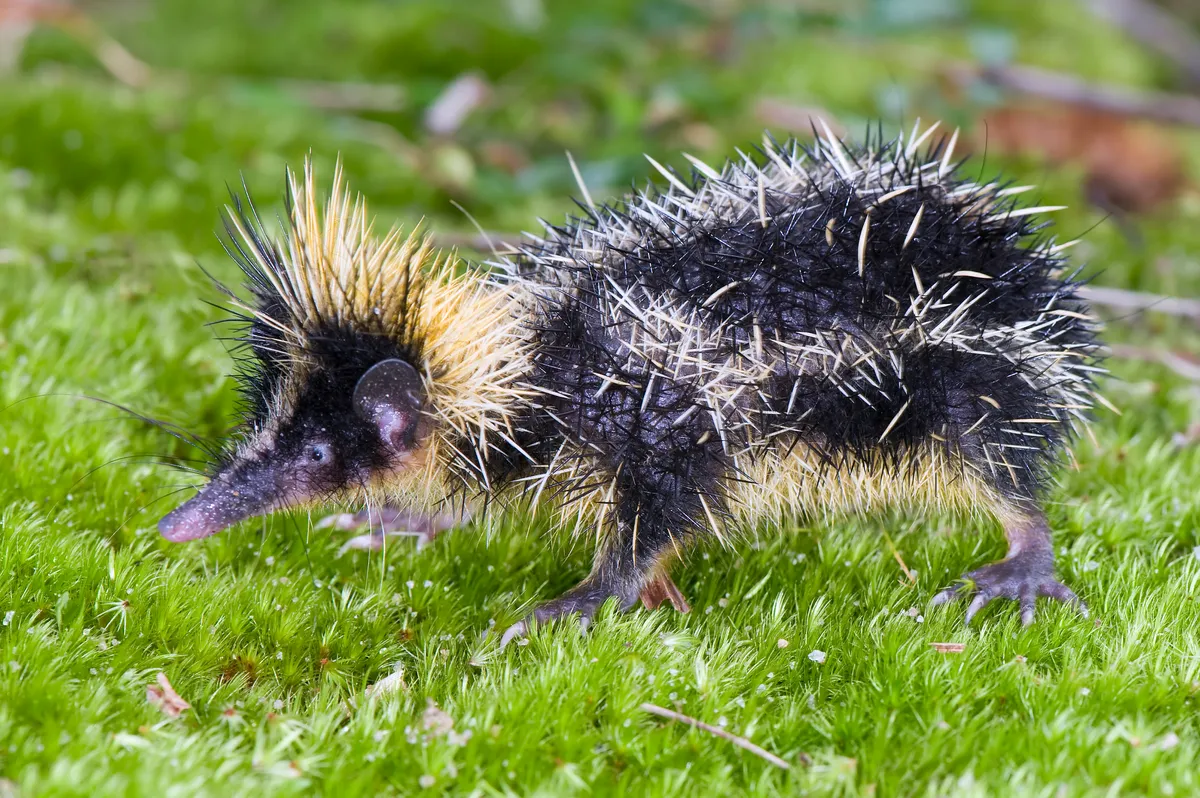
Looking more like a bedraggled bumblebee than the mammal it is, this species belongs to a very curious group indeed. Tenrecs, including this species, are mostly endemic to the island of Madagascar and despite all being quite closely related are wildly diverse, varying hugely in body size, look, and lifestyle.
Despite not looking much like one another, many do however closely resemble other species of animals that they are not closely related to at all. Some look like hedgehogs, some shrews, others rats and mice. As such they are both an example of both divergent and convergent evolution.
Divergent being when species in the same group evolve different traits in response to different habitats and lifestyles, convergent being when species in different groups evolve to have similar features due to similar environmental pressures. The lowland streaked tenrec for example, like distantly related hegehogs, has evolved sharp spines as a defence from predators. A very similar solution to the same problem.
Naked mole rat (Heterocephalus glaber)
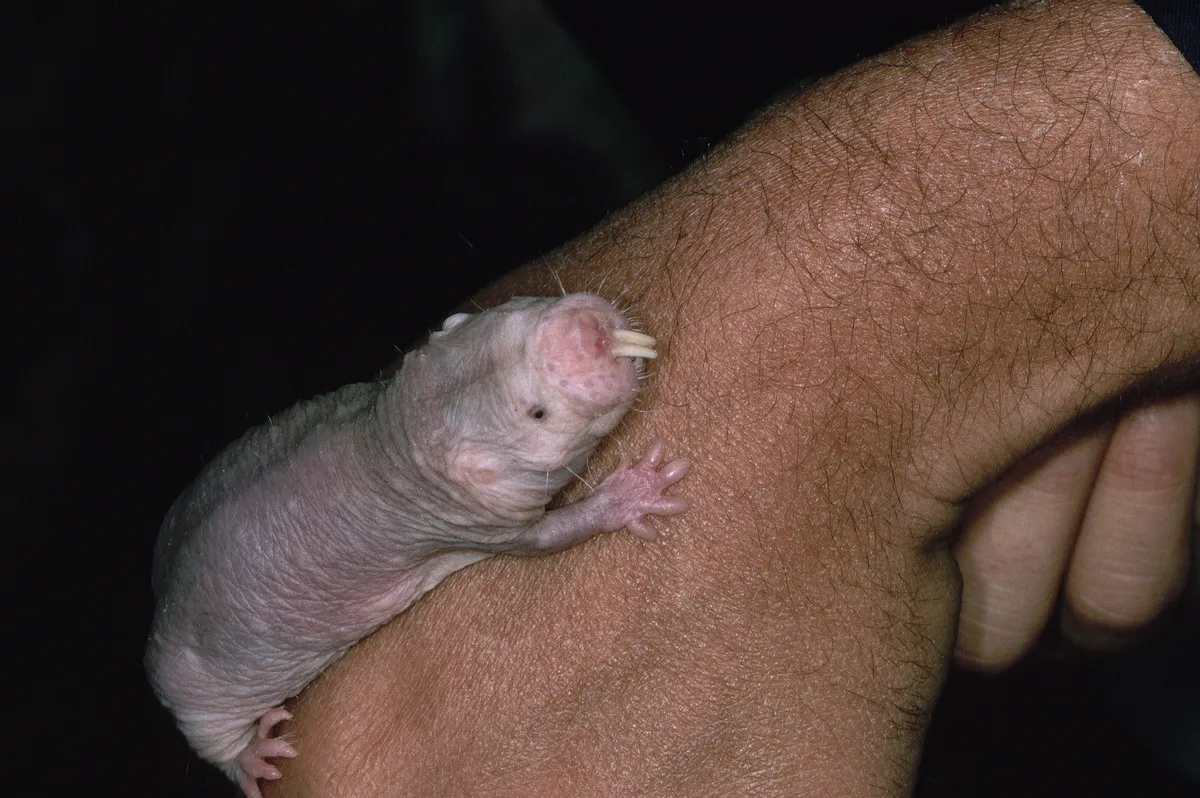
The next on our list is a stand-out both in terms of looks and lifestyle (and pretty much everything else). Naked mole rats are pink, nearly bald, extraordinarily long-lived rodents that live in subterranean burrows and have a social system most similar to that of bees!
What about all that isn’t weird and wonderful? Like many bees, ants, termites, and wasps, naked mole rats are eusocial. This means that they live in large colonies where only one female (the queen) and a select few males are allowed to breed and the rest of the colony spend their whole lives as workers and soldiers, creating tunnels and protecting the colony from predators. They are the only mammal that lives in this way.
Saiga antelope (Saiga tatarica)
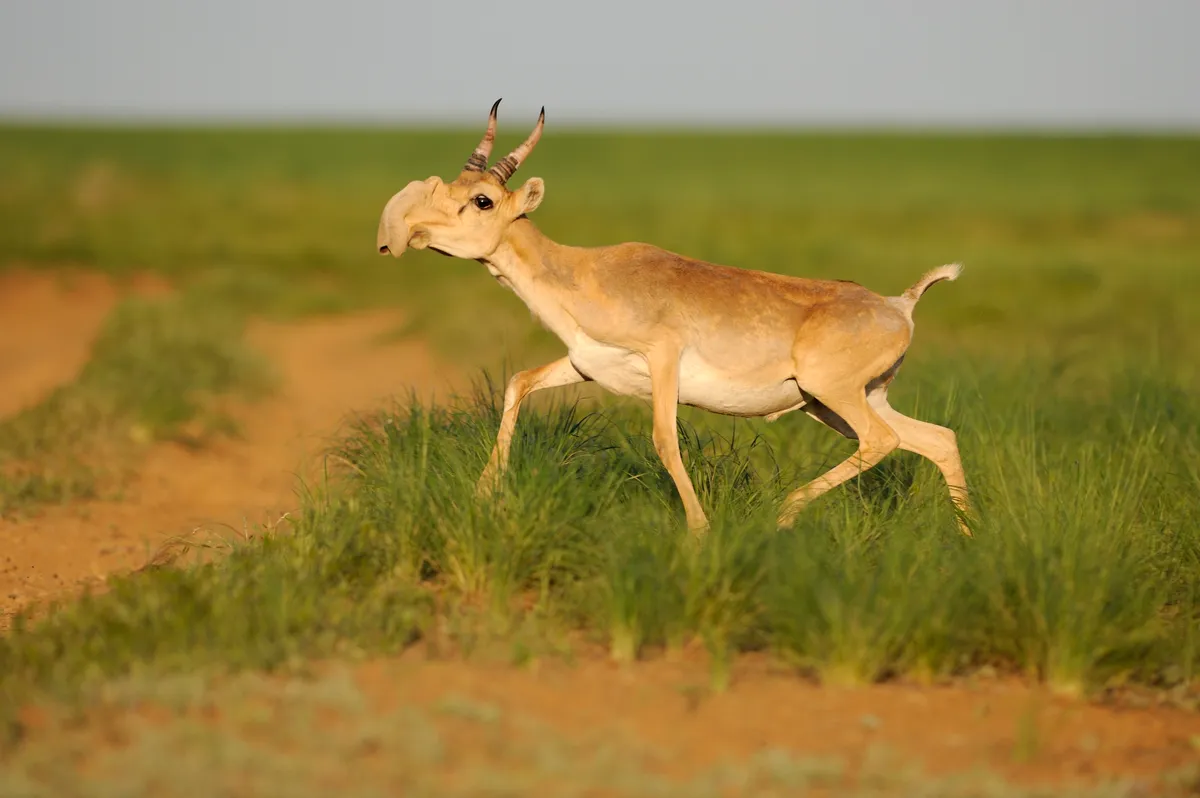
This species surely wins the prize for the weirdest-looking antelope out there (perhaps closely followed by the gerenuk). Its strange, bulbous nose actually has a very serious and important function, however. Living in the semi-desert grasslands of Central Asia (in Mongolia and Kazakhstan) saigas must endure very harsh conditions.
Not only do they have to contend with hot summers and freezing winters, they also deal with clouds of dust kicked up by the herd during their mammoth migrations. Their big, drooping noses will warm up frigid air before it enters their lungs, as well as filter out dust, helping them to survive in an unforgiving landscape.
Learn about a shocking mass-mortality event of saigas
Tiputini velvet worm (Oroperipatus tiputini)

The Tiputini is a newly described velvet worm from the Amazonian lowlands of Ecuador. Cute but deadly, this creature is equipped with a multitude of legs, but lacks the hard exoskeleton of arthropods (to which they are closely related). They are denizens of warm, humid forests and look a bit like soft, cuddly millipedes.
Like other velvet worms, it is a predator that immobilises invertebrate prey with jets of sticky mucous fired from glands either side of its mouth. It seems to be most active at night.
Atretochoana eiselti
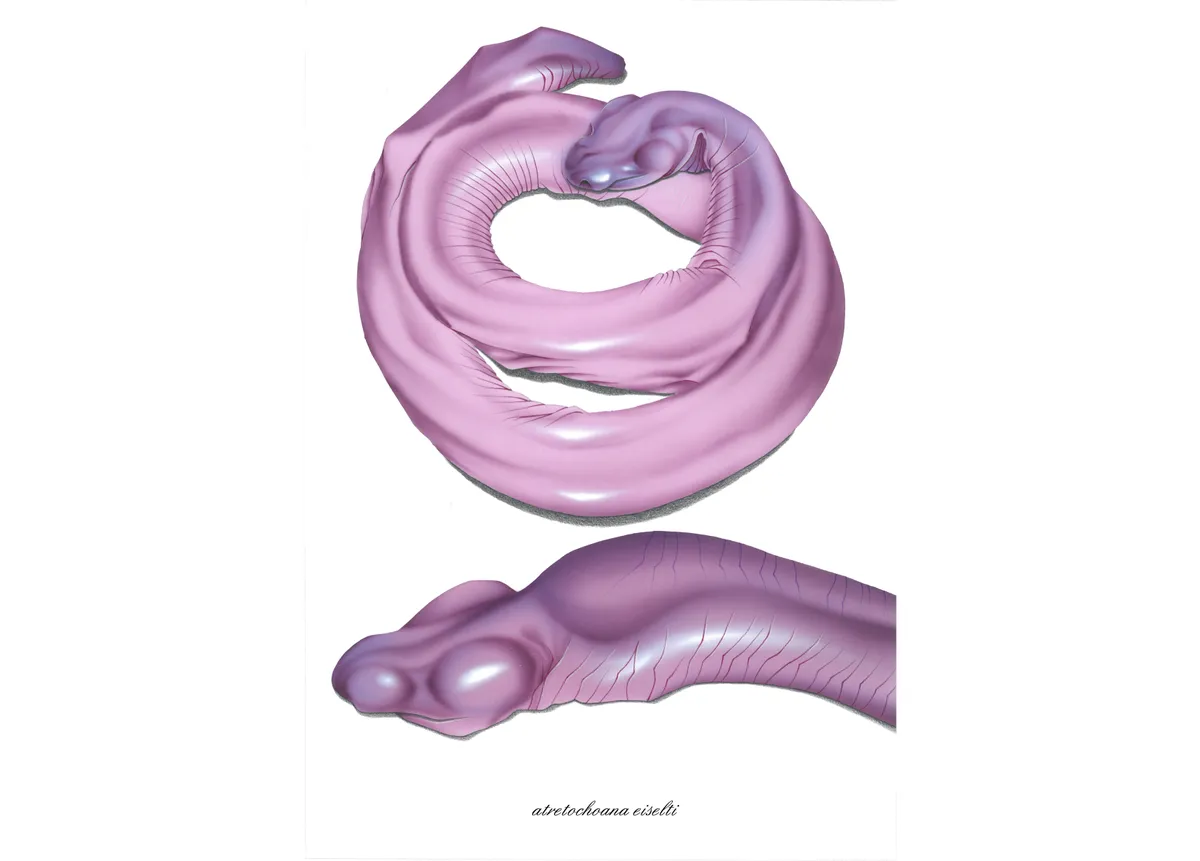
You probably haven't heard the name of this species before, but you may perhaps have heard what some call it. The penis snake… It's not too difficult to see why it got that charming moniker, however, it is not actually a snake but a caecilian!
Caecilians are limbless amphibians that live hidden in soil or streambeds, feeding on insects and earthworms. A particularly fascinating (or gross, depending on how you see it) fact about these amphibians is that after giving birth some species allow their young to feed on a special outer layer of their own skin, which the hatchlings peel off with specially modified teeth!
Atretochoana eiselti is not one of these species but is set apart by being the only known lungless caecilian and in fact the largest tetrapod (four-limbed vertebrate) to lack lungs.
Sea Pig (Scotoplanes genus)
Animals don’t get much weirder looking than the sea pig, a genus of sea cucumbers that look straight out of Doctor Who. Named for their plump, pink, and rounded bodies, sea pigs are very abundant, but you are unlikely to ever see one, living as they do at depths of over 1,200 to 5,000 metres (that’s over three miles!).
Their mode of locomotion is one of their many bizarre characteristics. They crawl across the deep-sea floor using specialised tubular “legs” that can be inflated and deflated with water, moving with hydraulics. This also allows them to churn up the soft mud under their “feet” as they move, freeing bits of decaying plant and animal material to snack on.
We named the sea pig one of the weirdest sea creatures in the world
Potoo (Nyctibiidae family)
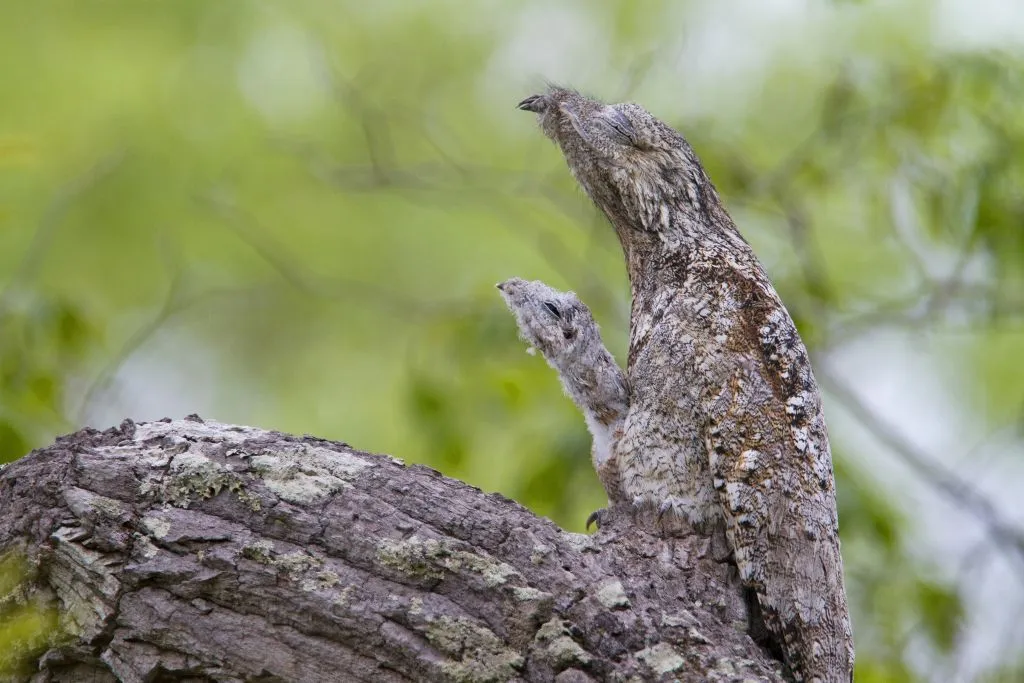
When it comes to weird birds, there is a particularly rich crop of weirdos to choose from. For example, the gaudy-hued king vulture was just pipped to the post, and the shoebill is out there doing its unnerving stare…
The potoo cannot be beaten on the funny factor, however, and fully deserves a place on the weirdest animals list. This group of birds, closely related to nightjars and frogmouths, can be found in the forests of Central and South America. They are nocturnal, hunting flying insects from a perch at night, and spending their days blending into tree stumps with their remarkably convincing camouflage.
See some more fascinating examples of animal camouflage in our gallery.
Florida softshell turtle (Apalone ferox)
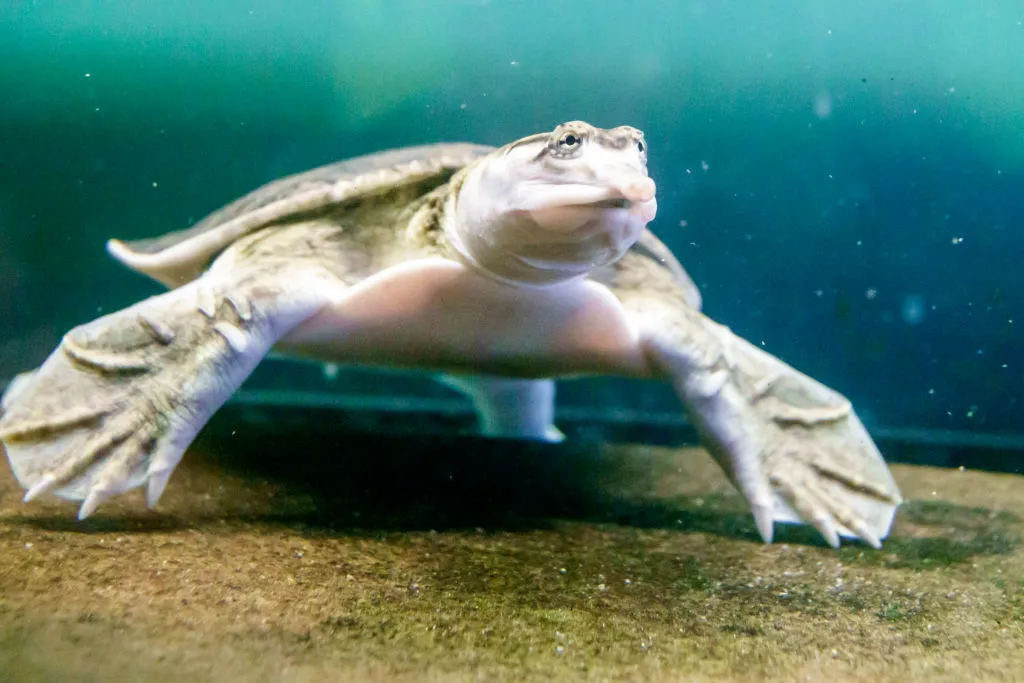
The Florida softshell turtle probably has one of the funniest, grumpiest faces in the whole of the animal kingdom! Found (as the name suggests) primarily in the US state of Florida, these singular reptiles are almost entirely aquatic, their snorkel-like noses and long necks allowing them to easily breathe from the surface whilst remaining mostly submerged.
Like all softshell turtles, instead of having a hard scaly carapace, they instead have a pliable cartilaginous one covered in leathery skin. They also employ a camouflage technique known as countershading, wherein an animal's underside is lighter than the upper side of its body. This has the effect of counteracting natural shadowing (where sunlight coming from above makes the upper side lighter) so that the animal looks less solid and less conspicuous.
Learn about the differences between turtles and tortoises
The treehopper
The treehopper is the cyborg of the insect world, with bizarre projections and protuberances sprouting from its thorax. The precise function of these extreme enhancements is rather mysterious.
They may play a part in physical protection or mate attraction. Or they could serve as resonators for the amplification of acoustic signals. In the case of the tropical American species Alchisme grossa, though, camouflage is at least part of the story. And any predator that sees through the thorn-like disguise still has to contend with an arsenal of toxic chemicals harnessed from the sap that the bugs suck from wild potato plants.
Praya dubia
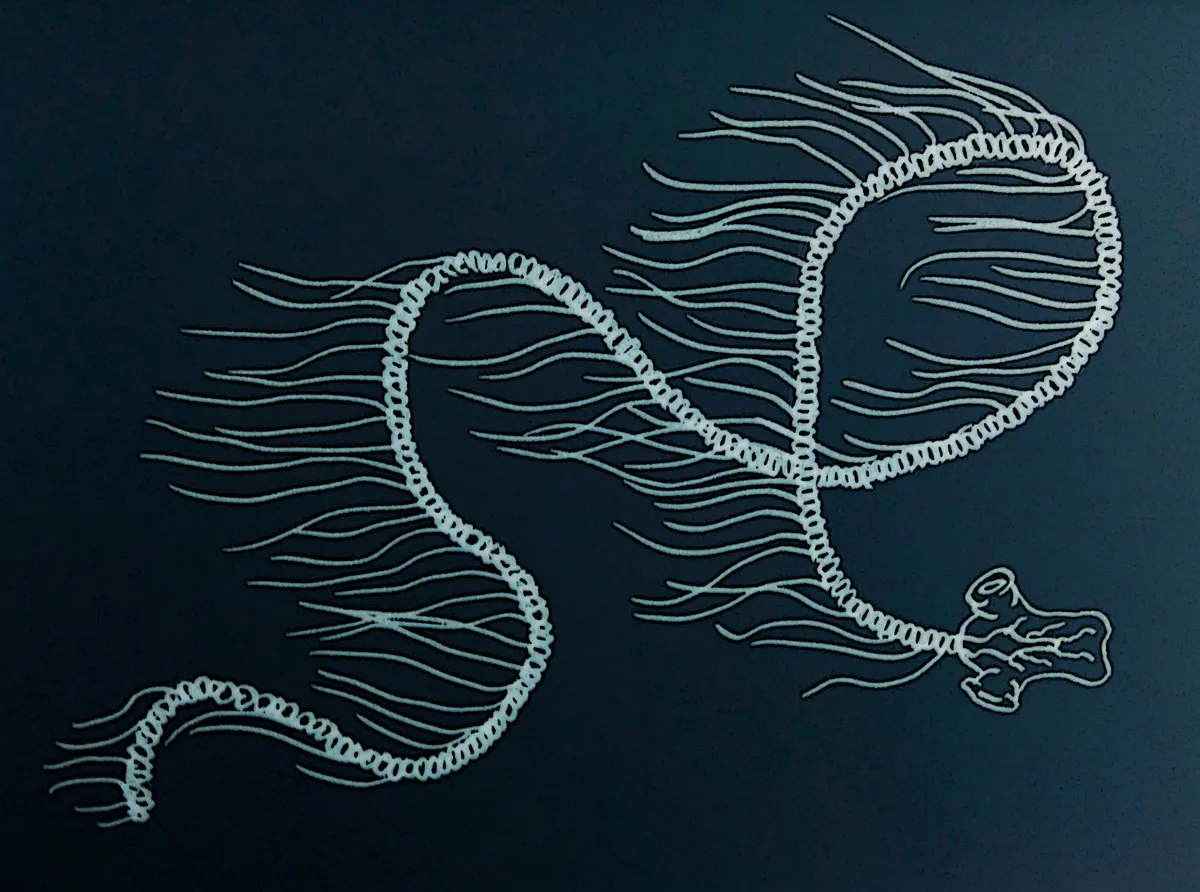
It’s not a fish, a whale or a jellyfish – the giant siphonophore (Praya dubia) is the unlikely giant of the underwater world and definitely worthy of a place on the weirdest animals list.
The giant siphonophore grows to more than 40m and lives in cold waters at depths of 50–200m. It is a colonial animal, which means it’s actually a long chain of individuals. Each one has a dedicated role – some sting and capture food, others digest and spread the nutrition throughout the colony, while the remainder are responsible for reproduction.
Definitely strange....and one of the weirdest sea creatures ever
Pacific barreleye fish
On the weirdest animal scale the Pacific barreleye fish Macropinna microstoma is pretty strange. Its skull is transparent, as is the skin on its head and most of its face.
These strange features enable it to see things more clearly, and this odd design protects its eyes, on which the fish’s life depends.
This pint-sized fish – which is just a few centimetres long – specialises in stealing prey from jellyfish, tracking the ghostly predators by their shadows or faint bioluminescence.
The special tube-shaped eyes, after which it is named, make this stealthy stalking possible. Like tiny binoculars, they provide tunnel vision with a sharp focus on minute details. The fish’s green lenses also highlight any firefly-like glows in the dark.
Star-nosed mole
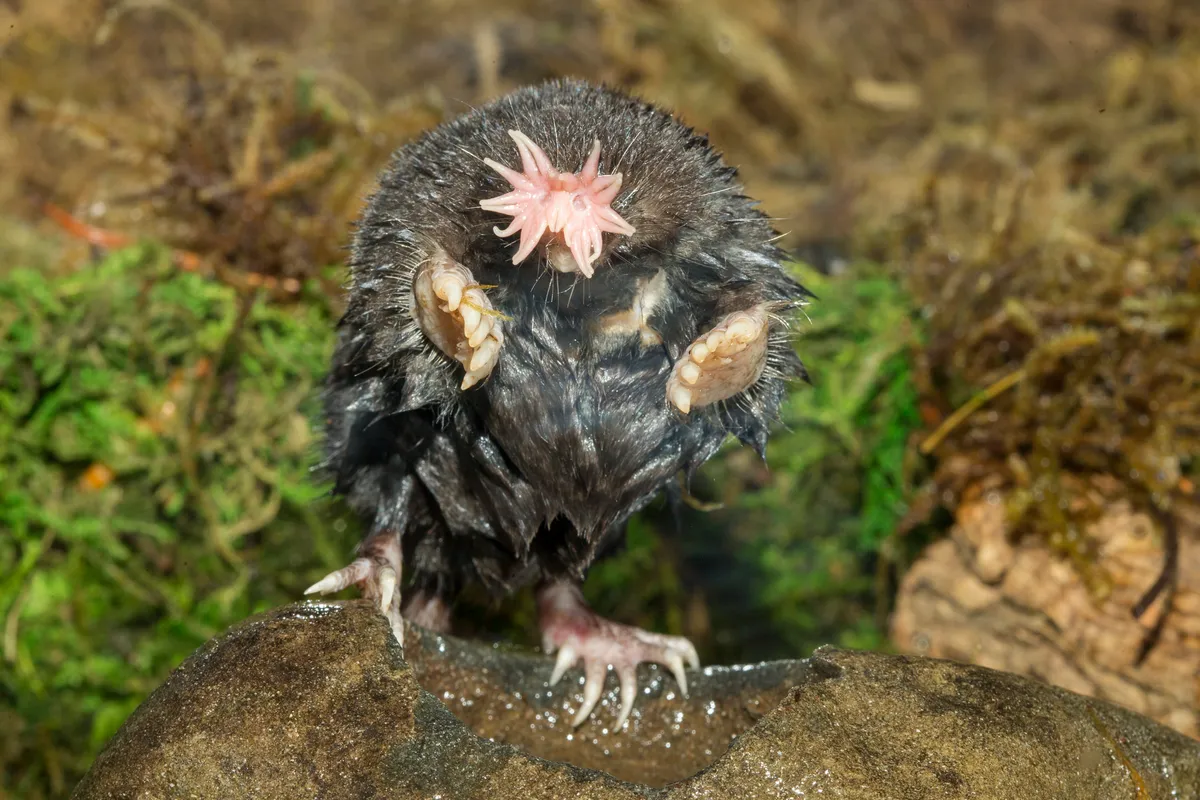
The freakish, tentacled snout of the star-nosed mole Condylura cristata may look funny, and earn the mole a place on the weirdest animals list, but it’s nothing to laugh at. It could be the most skilled sniffer under the sun – even when underwater.
Its nose is used more as a super-sensitive spare paw with 22 toes. The pea-sized organ is extremely perceptive, packed with over 25,000 sensory receptors – compared with 17,000 in the human hand. The mole can identify anything it touches seven times faster than a person can blink. This makes it the most sensitive organ in the animal world.
Borneo tarsier
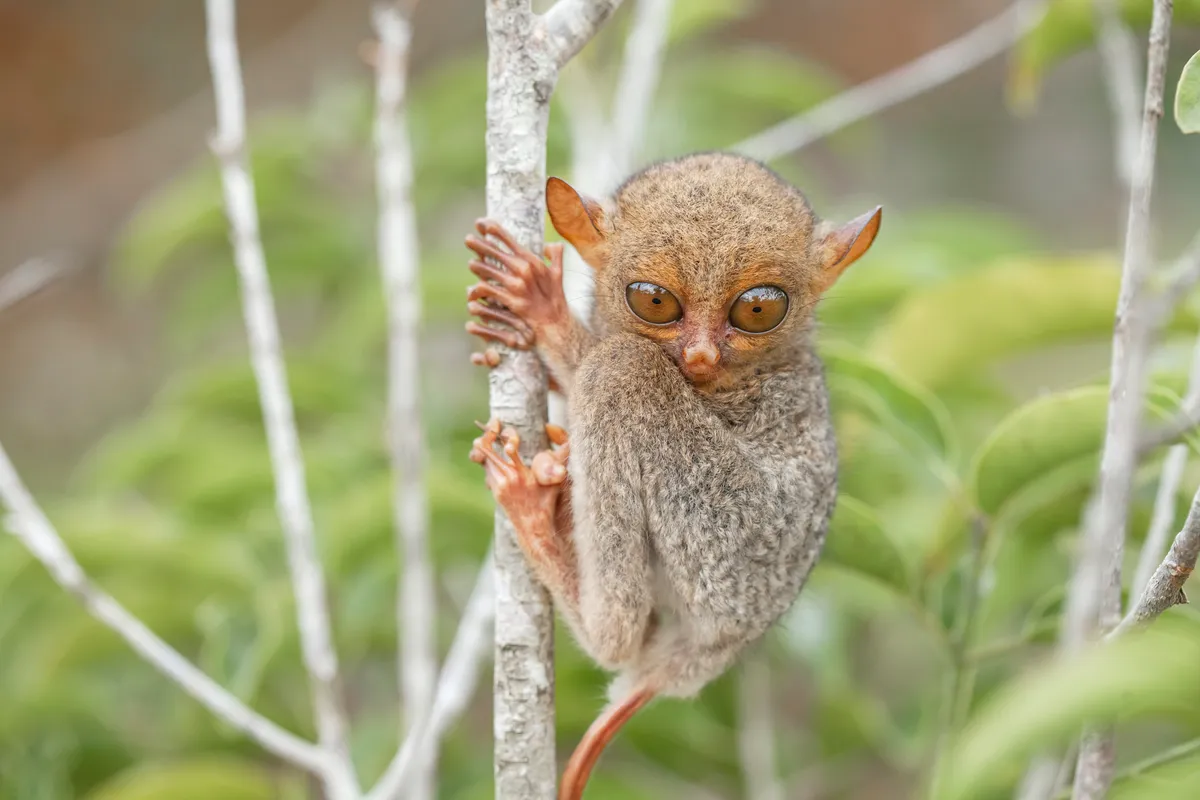
This small strange-looking, big-eyed, nocturnal, carnivorous primate is reminiscent of a house elf in Harry Potter - or perhaps it's Gollum from The Lord of The Rings he reminds us of. It eats mainly insects and lives in primary and secondary forest, as well as along the coasts or on the edge of plantations. Its long hind legs and fingers enable it to climb and leap; it has extremely sensitive ears and those huge eyes help it to see in the dark.






